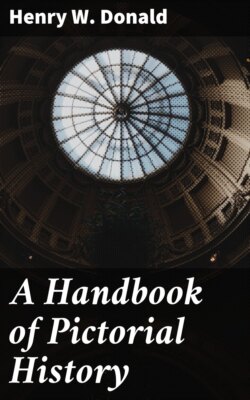Читать книгу A Handbook of Pictorial History - Henry W. Donald - Страница 3
На сайте Литреса книга снята с продажи.
PREFACE.
ОглавлениеTable of Contents
It has been felt that in the study of English History, to the ordinary student and teacher, there are great difficulties in the way of consulting the numerous standard and other excellent works, on the subjects dealt with in this volume. Many have not sufficient leisure, and many are unable to make use of the facilities for study and research offered by our great national and provincial libraries and museums. And, to most, the prohibitive cost of a representative collection of these standard works is an effectual bar to the acquisition of a personal collection.
An acquaintance with these subjects is necessary to an intelligent appreciation of the life history and development of our nation, and of the conditions of life of our ancestors, and this work has been undertaken for students and teachers with regard to these matters, with the hope that, by its means, the path of study will be illuminated, and the interest shown in the study of history correspondingly increased.
Too often, in the past, has history been taught as a series of dry lessons on facts and dates, and although in late years there has been a great improvement in this respect, to many the living facts around us, as bearing on our history, in our churches, our historic buildings, our museums, and our national collections, are still disregarded. What eloquent tongues they have, and yet, on what deaf ears do their voices fall!
Mr. Fairholt, in his well-known work on “Costume in England,” says: “A knowledge of costume is, in some degree, inseparable from a right knowledge of history. We can scarcely read its events without, in some measure, picturing in the mind’s eye the appearance of the actors.”
What is true of costume, which includes, of course, civil, military, and ecclesiastical costume, is equally true of architecture and other matters associated with the daily lives of our forefathers.
How they lived and died, how they worked, how they dressed, how and where they worshipped God, and the influences brought to bear upon them by the Church, must be realized as factors in the development of the nation.
It is hoped that this work may prove useful to the student, to the pupils in our schools and colleges, and to teachers who have not been able to make a special study of these things.
Several plans of arranging the subject-matter have suggested themselves, and the writer has thought—though it is open, of course, to criticism—that the work would be most usefully and most easily consulted by arranging it under the heads of our historic periods. It will be readily understood that this is merely an arbitrary arrangement, and that there must be overlapping at times. The aim has been to make each section as complete as possible in the given space, and yet to avoid tedious details. To experts the food may seem very light, but it is to the average student and teacher, to whom the subjects are new, that the work must appeal.
Every effort has been made to secure accuracy and truthfulness, both in the matter and in the six hundred and eighty drawings which illustrate it.
Very many works have been consulted, and, as all the illustrations are from authentic and contemporary sources, it is hoped that the usefulness of the work will be very considerable.
The writer wishes to express his great obligation to the following writers and books, whom he has laid under contribution:—
Greenwell’s British Barrows,
Dawkin’s Early Man in Britain,
Evans’s Ancient Stone Implements of Great Britain,
Strutt’s Horda,
Grose’s Military Antiquities,
Wallis Budge’s Roman Antiquities at Chesters,
Jewitt’s Ceramic Art of Great Britain,
Fairholt’s Costume in England,
Mrs. Ashdown’s British Costume during Nineteen Centuries,
Planche’s Cyclopædia of Costume and History of British Costume,
Cutt’s Scenes and Characters of the Middle Ages,
Barnard’s Companion to English History, Middle Ages,
Traill’s Social England,
Green’s Short History (Illustrated Edition),
Parker’s various works on Gothic Architecture,
Rickman’s Gothic Architecture,
Boutell’s Monumental Brasses of England,
Suffling’s English Church Brasses,
Macklin’s Brasses of England,
Ashdown’s British and Foreign Arms and Armour,
Hewitt’s Ancient Armour and Weapons in Europe,
Boutell’s Arms and Armour,
Fox-Davies’s Complete Guide to Heraldry,
Boutell’s English Heraldry,
Bloom’s English Seals,
Abbot Gasquet’s English Monastic Life,
Commander Robinson’s British Fleet,
Oman’s History of the Art of War,
Fowkes’s Bayeux Tapestry,
Gardiner’s History of England,
The Journals of the British Archæological Association, and of various County Associations.
The writer, too, wishes to thank the Library Committee of the City of London Corporation for permission to make drawings of objects in the Guildhall Museum, and Mrs. Ashdown for permission to make use of illustrations in her “British Costume.”
Henry W. Donald.
